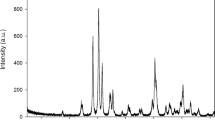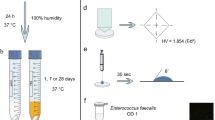Abstract
Dental cement made from silica rice husks, reinforced with zirconia and alumina, may carry improved physical and mechanical properties. This study aimed to investigate the physical and mechanical properties and the cytotoxicity of an experimental dental hybrid composite adhesive cement (DCAC), made from silica rice husk and containing different amounts of zirconia and alumina. Five groups were included, namely a control group with DCAC comprising only silica (CTR); groups containing either 3 wt.% zirconia (Zr3), 3 wt.% alumina (AL3), or 10 wt.% alumina (AL10); and a positive control group (Rely-X U200). The DCACs were characterised based on the degree of conversion (DC) and void volumes, then tested for compressive strength (CS) and cytotoxicity. In all groups, DC was higher than 60% and there was no significant difference between groups, except for CTR. Void content significantly decreased when the hybrid fillers were used (p < 0.05). The CS of group AL10, with a higher alumina weight fraction, was significantly different from CTR (p < 0.05). At concentration < 100 mg mL−1, cytotoxicity of DCAC was comparable to Rely-X U200. Reinforcement of DCAC with zirconia and alumina may, thus, improve its physical and mechanical properties. Hybridisation of different filler particle sizes is one way to improve both physical and mechanical properties. All DCACs showed no or minimal cytotoxicity.






Similar content being viewed by others
References
Noushad M, Ab Rahman I, Che Zulkifli NS, Husein A, Mohamad D (2014) Low surface area nanosilica from an agricultural biomass for fabrication of dental nanocomposites. Ceram Int 40:4163–4171
Prieto L, Pimenta De Araújo C, Araujo Pierote J, Salles De Oliveira D, Coppini E, Sartini Paulillo L (2018) Evaluation of degree of conversion and the effect of thermal aging on the color stability of resin cements and flowable composite. J Conserv Dent 21(1):47–51
Mazloom-Jalali A, Taromi FA, Atai M, Solhi L (2020) Dual modified nanosilica particles as reinforcing fillers for dental adhesives: synthesis, characterization, and properties. J Mech Behav Biomed Mater 110:103904
Kurt A, Altintas SH, Kiziltas MV, Tekkeli SE, Guler EM, Kocyigit A et al (2018) Evaluation of residual monomer release and toxicity of self-adhesive resin cements. Dent Mater J 37(1):40–48
Wang Y, Zhu M, Zhu XX (2021) Functional fillers for dental resin composites. Acta Biomater 122:50–65
Baloš S, Pilić B, Petronijević B, Marković D, Mirković S, Šarčev I (2013) Improving mechanical properties of flowable dental composite resin by adding silica nanoparticles. Vojnosanit Pregl 70(5):477–483
Zulkifli NSC, Ab Rahman I, Mohamad D, Husein A (2013) A green sol-gel route for the synthesis of structurally controlled silica particles from rice husk for dental composite filler. Ceram Int 39:4559–4567
Al-Rawas M, Johari Y, Mohamad D, Khamis MF, Ahmad WMAW, Ariffin Z et al (2021) Water sorption, solubility, degree of conversion, and surface hardness and topography of flowable composite utilizing nano silica from rice husk. J Mater Res Technol 15:4173–4184
Kundie F, Azhari CH, Muchtar A, Ahmad ZA (2018) Effects of filler size on the mechanical properties of polymer-filled dental composites: a review of recent developments. J Phys Sci 29(1):141–165
Bindu MG, Satapathy BK, Jaggi HS, Ray AR (2013) Size-scale effects of silica on bis-GMA/TEGDMA based nanohybrid dental restorative composites. Compos Part B Eng 53:92–102
M. Al Badr R, (2018) Effect of addition ZrO2 nanoparticles to dental composites on the physical and mechanical properties. Int J Sci Eng Res 9(6):1288–1293
Wang T, Tsoi JK-H, Matinlinna JP (2016) A novel zirconia fibre-reinforced resin composite for dental use. J Mech Behav Biomed Mater 53:151–160
Guo G, Fan Y, Zhang JF, Hagan JL, Xu X (2012) Novel dental composites reinforced with zirconia-silica ceramic nanofibers. Dent Mater 28(4):360–368
Alsharif SO, Bin Md Akil H, Abbas Abd El-Aziz N, Arifin Bin Ahmad Z (2014) Effect of alumina particles loading on the mechanical properties of light-cured dental resin composites. Mater Des, 54: 430–43
Souza JCM, Silva JB, Aladim A, Carvalho O, Nascimento RM, Silva FS et al (2016) Effect of zirconia and alumina fillers on the microstructure and mechanical strength of dental glass ionomer cements. Open Dent J 10(1):58–68
Noushad M, Ab Rahman I, Husein A, Mohamad D (2016) Nanohybrid dental composite using silica from biomass waste. Powder Technol 299:19–25
Khan AS, Khalid H, Sarfraz Z, Khan M, Iqbal J, Muhammad N et al (2016) Vibrational spectroscopy of selective dental restorative materials. Appl Spectros Rev 52(6):507–540
ASTM D3171–15, Standard Test Methods for Constituent ontent of Composite Materials (2015) West Conshohocken, Pennsylvania: ASTM International.
ASTM D792–20, Standard Test Methods for Density and Specific Gravity (Relative Density) of Plastics by Displacement (2020) West Conshohocken, Pennsylvania: ASTM International
Han Z, Jeong S, Noh J, Oh D (2020) Comparative study of glass fiber content measurement methods for inspecting fabrication quality of composite ship structures. Appl Sci 10:1–17
Furtos G, Baldea B, Silaghi-Dumitrescu L, Moldovan M, Prejmerean C, Nica L (2012) Influence of inorganic filler content on the radiopacity of dental resin cements. Dent Mater J 31(2):266–272
Mirica IC, Furtos G, Bâldea B, Lucaciu O, Ilea A, Moldovan M et al (2020) Influence of filler loading on the mechanical properties of flowable resin composites. Materials (Basel) 13(6):1–11
ISO 9917-2, Dentistry-Water-based Cements-Part 2: Resin-modified cements (2017) Geneva, Switzerland: International Organization for Standardization
ISO 10993-12:2021, Biological evaluation of medical devices—Part 12: Sample preparation and reference materials (2021) Geneva, Switzerland: International Organization for Standardization
ISO 7045:2018, Dentistry-Evaluation of biocompatibility of medical devices used in dentistry (2018) Geneva, Switzerland: International Organization for Standardization
Jiang J, Wang W, Shen H, Wang J, Cao J (2017) Characterization of silica particles modified with γ-methacryloxypropyltrimethoxysilane. Appl Surf Sci 397:104–111
Aydınoğlu A, Yoruç ABH (2017) Effects of silane-modified fillers on properties of dental composite resin. Mater Sci Eng C 79:382–389
Chen B, Lu Z, Meng H, Chen Y, Yang L, Zhang H et al (2019) Effectiveness of pre-silanization in improving bond performance of universal adhesives or self-adhesive resin cements to silica-based ceramics: chemical and in vitro evidences. Dent Mater 35:543–553
Wisser FM, Abele M, Gasthauer M, Müller K, Moszner N, Kickelbick G (2012) Detection of surface silanol groups on pristine and functionalized silica mixed oxides and zirconia. J Colloid Interface Sci 374(1):77–82
Da Silvaa CN, Júniorb JMS, Veigaa AG, Muchavec GJ, Arandac DAG, Afonsoa JC et al (2019) Characterization of silicon-aluminum-zirconium oxide obtained by the sol-gel process. Quim Nova 42(5):513–521
Mahdi MA, Yousefi SR, Jasim LS, Salavati-Niasari M (2022) Green synthesis of DyBa2Fe3O7.988/DyFeO3 nanocomposites using almond extract with dual eco-friendly applications: photocatalytic and antibacterial activities. Int J Hydrog Energy 47(31):14319–14330
Yousefi SR, Masjedi-Arani M, Morassaei MS, Salavati-Niasari M, Moayedi H (2019) Hydrothermal synthesis of DyMn2O5/Ba3Mn2O8 nanocomposite as a potential hydrogen storage material. Int J Hydrog Energy 44(43):24005–24016
Antunes PV, Ramalho A, Carrilho EVP (2014) Mechanical and wear behaviours of nano and microfilled polymeric composite. Effect of filler fraction and size. Mater Des 61:50–60
Dziedzic DSM, Prohny JPS, Picharski GL, Furuse AY (2016) Influence of curing protocols on water sorption and solubility of a self-adhesive resin-cement. Brazilian J Oral Sci 15(2):144–150
Kaasalainen M, Aseyev V, von Haartman E, Karaman DŞ, Mäkilä E, Tenhu H et al (2017) Size, stability, and porosity of mesoporous nanoparticles characterized with light scattering. Nanoscale Res Lett 12(74):1–10
Alkhudhairy F, Vohra F, Naseem M, Owais MM, Amer AHB, Almutairi KB (2020) Color stability and degree of conversion of a novel dibenzoyl germanium derivative containing photo-polymerized resin luting cement. J Appl Biomater Funct Mater 18:1–7
Lancellotti AC, Pacheco RR, Gonçalves LS, Giannini M (2014) Filler particles analysis and degree of conversion of resin cements. Dent Mater 30(1):e27
Ma P, Jia Y, Gokuldoss P konda, Yu Z, Yang S, Zhao J et al (2017) Effect of Al2O3 nanoparticles as reinforcement on the tensile behavior of Al-12Si composites. Metals (Basel) 7(9): 1–11
Pratap B, Gupta RK, Bhardwaj B, Nag M (2020) Evaluation of compressive strength and void content of resin based dental composites. In: Materials Today: Proceedings, pp 2567–2569
Bek M, Gonzalez-Gutierrez J, Kukla C, Črešnar KP, Maroh B, Perše LS (2020) Rheological behaviour of highly filled materials for injection moulding and additive manufacturing: effect of particle material and loading. Appl Sci 10(22):1–23
Elbishari H, Silikas N, Satterthwaite J (2012) Filler size of resin-composites, percentage of voids and fracture toughness: Is there a correlation? Dent Mater J 31(4):523–527
Lee MJ, Kim MJ, Kwon JS, Lee SB, Kim KM (2017) Cytotoxicity of light-cured dental materials according to different sample preparation methods. Materials (Basel) 10(3):1–12
Noorani TY, Luddin N, Ab. Rahman I, Masudi SM (2017) In vitro cytotoxicity evaluation of novel nano-hydroxyapatite-silica incorporated glass ionomer cement. J Clin Diagnostic Res 11(4): 105–109
Acknowledgements
All authors contributed towards data analysis, drafting and critically revising the paper and agree to be accountable for all aspects of the work.The authors thank Medigate Sdn. Bhd. for providing dental light-curing unit and technicians for their support in the laboratory. This work was supported by the Malaysian Ministry of Higher Education through the Fundamental Research Grant Scheme [grant number 203/PBAHAN/6071385] and Universiti Sains Malaysia under the Research University Grant [grant number 1001/PPSG/8012215].
Author information
Authors and Affiliations
Contributions
All authors contributed towards data analysis, drafting and critically revising the paper and agree to be accountable for all aspects of the work.
Corresponding author
Ethics declarations
Conflict of interest
The work is compliant with ethical standards.
Additional information
Publisher's Note
Springer Nature remains neutral with regard to jurisdictional claims in published maps and institutional affiliations.
Rights and permissions
Springer Nature or its licensor holds exclusive rights to this article under a publishing agreement with the author(s) or other rightsholder(s); author self-archiving of the accepted manuscript version of this article is solely governed by the terms of such publishing agreement and applicable law.
About this article
Cite this article
Ismail, N.H., Awang, R.A., Kannan, T.P. et al. Physicomechanical and cytotoxic effects of a newly developed dental hybrid composite adhesive cement reinforced with zirconia and alumina. Polym. Bull. 80, 6945–6964 (2023). https://doi.org/10.1007/s00289-022-04381-1
Received:
Revised:
Accepted:
Published:
Issue Date:
DOI: https://doi.org/10.1007/s00289-022-04381-1




